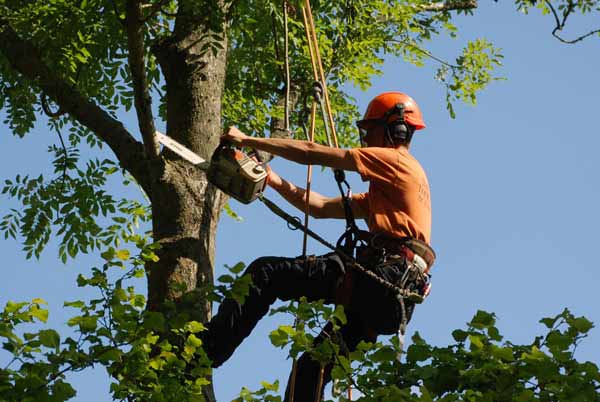
When caring for trees in your yard, one important decision often comes up: Should you prune the tree or remove it completely? Each option serves a different purpose and knowing when to choose one over the other can save you time, money, and even prevent potential hazards.
Let’s break down the key differences and what you need to know before deciding between tree pruning and removal.
Table of contents
Toggle1. Assess the Tree’s Health and Safety
Start by evaluating the condition of your tree. If the tree is dead, dying, or diseased beyond recovery, removal is usually the safest and most effective solution. Dead trees can fall without warning and pose serious safety risks.
On the other hand, if your tree is healthy but overgrown, interfering with structures, or just needs reshaping, pruning is the better choice. Pruning helps maintain the tree’s health and appearance by removing unwanted branches or thinning out dense growth.
2. Have the Right Tools for the Job
Whether pruning or removing a tree, using proper tools ensures both safety and effectiveness. Here are some common tools:
- Chainsaw: Ideal for cutting down trees or large branches.
- Loppers: Great for thick or high branches.
- Pruning Saws: Handheld with curved blades, used for precise cuts.
- Axe and Hatchet: For chopping wood or smaller trees.
- Pole Saw: Extends your reach for high branches.
- Hand Pruners (Shears): For trimming small branches and twigs.
Using the wrong tools can damage the tree—or worse, cause injury.
3. Prune at the Right Time
Timing matters. Pruning during the dormant season (usually winter) is ideal. Trees are less vulnerable to pests and disease when pruned during this period. Avoid heavy pruning in spring when sap is actively rising—it can stress the tree and weaken it.
However, it’s always okay to remove dead or broken branches right away to maintain safety and appearance.
4. Monitor Tree Health Regularly
Healthy trees are less likely to need removal. Watering, especially during dry months, helps trees stay strong. As gardening expert Carlo from 800flower.ae suggests, deep watering during hot seasons helps roots absorb moisture effectively.
You can check soil moisture by pressing your finger into the ground. If it’s dry and crumbly, your tree may not be getting enough water.
Unhealthy soil leads to weak trees—and weak trees may eventually need to be removed if they become a hazard.
5. Know How to Prune Properly
Tree pruning isn’t just cutting randomly. Follow the three-cut method for best results:
- First Cut: Make a small notch on the underside of the branch to prevent bark tearing.
- Second Cut: Cut from the top a bit farther out to remove the weight of the branch.
- Final Cut: Cut just outside the branch collar (the swollen area where the branch joins the trunk) to promote proper healing.
This method reduces damage and helps the tree recover quickly.
6. Remove Only What’s Necessary
When pruning, less is more. Removing too much at once can shock the tree or stunt its growth. A general rule: never remove more than 10% of the tree’s total foliage at one time.
Also, consider the tree’s age and health. Younger trees recover faster from pruning than older, more established ones.
7. Understand the Tree’s Growth Pattern
Proper pruning starts early. Shaping a tree in its early growth stages promotes a strong structure and reduces the need for major pruning later.
By watching how the tree grows over time, you can better predict how it will respond to pruning—and avoid large, harmful cuts when it’s fully grown.
The Bottom Line: Prune for Health, Remove for Safety
Pruning helps maintain a tree’s shape, health, and beauty. It’s essential for preventing overgrowth and keeping your landscape neat.
Tree removal, however, is necessary when a tree becomes unsafe, unhealthy, or stands in the way of construction.
By regularly monitoring your trees and knowing when to act, you’ll make better decisions for your yard—and avoid costly mistakes.





